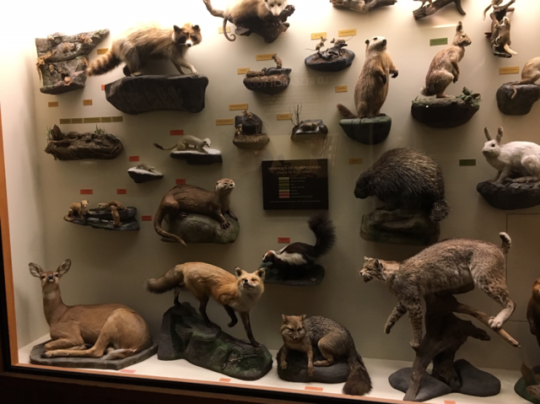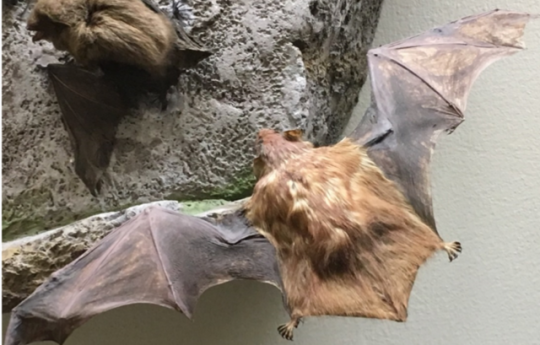
Can you name our region’s most colorful mammal? If the question was asked in front of the museum’s Mammals of Pennsylvania display, many people would choose the red fox near the center of the exhibit’s floor-level row.
Five feet above fox, and just inches from the tip of a raccoon’s tail, a far smaller, but equally bright alternate exists in the form of a gliding eastern red bat.

In color, red bat fur ranges from golden brown to bright rusty orange, with males typically sporting brighter shades than females. The bright fur coats of this widespread insect-eating species provide surprisingly effective camouflage when the bats are at rest. Red bats are tree bats, a term that indicates the species’ preference for spending daylight hours roosting within the foliage of deciduous and sometimes evergreen trees.

With wings folded, they hang upside-down from the grip of a single foot, looking, to casual observers, like dead leaves or pine cones.
Red Bats have so far escaped the devastating effects of white-nose syndrome, a fungal disease that since 2007 has caused mortality rates as high as 90% at hibernation sites of many other bat species. Remarkably, on fall migration flights to southern portions of their North American range, red bats have been known to cross long stretches of territory with flocks of migrating birds.
For more information about eastern red bats, please check the species account prepared by Bat Conservation International.
For information about the vital ecosystem contributions of the world’s 1,300 bat species please visit Merlin Tuttle’s Bat Conservation.
Patrick McShea works in the Education and Visitor Experience department of Carnegie Museum of Natural History. Museum employees are encouraged to blog about their unique experiences and knowledge gained from working at the museum.
